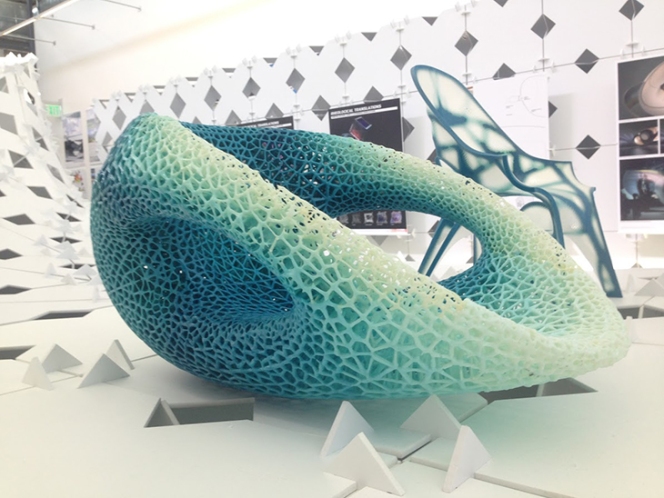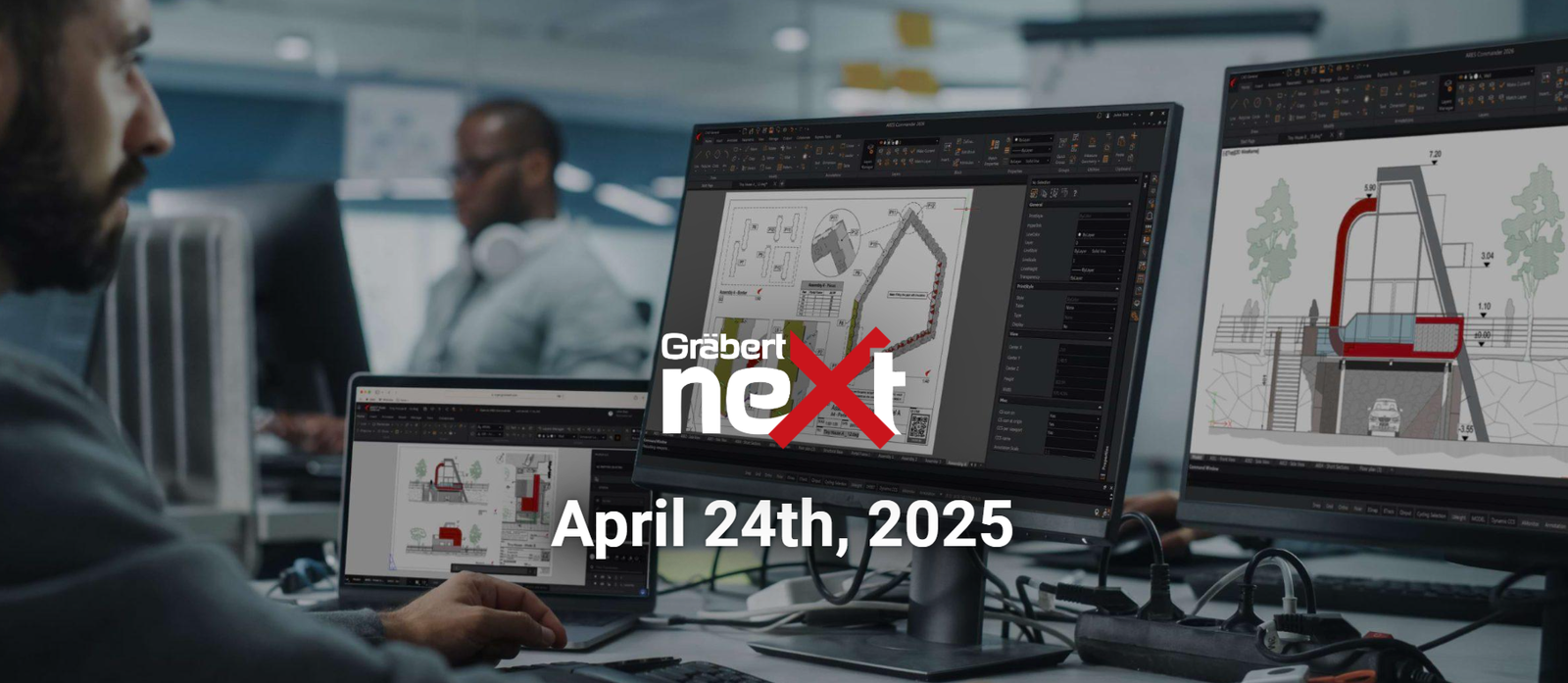Your Cart is Empty
Customer Testimonials
-
"Great customer service. The folks at Novedge were super helpful in navigating a somewhat complicated order including software upgrades and serial numbers in various stages of inactivity. They were friendly and helpful throughout the process.."
Ruben Ruckmark
"Quick & very helpful. We have been using Novedge for years and are very happy with their quick service when we need to make a purchase and excellent support resolving any issues."
Will Woodson
"Scott is the best. He reminds me about subscriptions dates, guides me in the correct direction for updates. He always responds promptly to me. He is literally the reason I continue to work with Novedge and will do so in the future."
Edward Mchugh
"Calvin Lok is “the man”. After my purchase of Sketchup 2021, he called me and provided step-by-step instructions to ease me through difficulties I was having with the setup of my new software."
Mike Borzage
The Interview: Conversations on Generative Design through Gaming Environments with Jose Sanchez @ ACADIA 2014
January 29, 2015 7 min read
Editor's Note: 'Our man in Acadia' Apollo Spiliotis shares the final entry of his Architect's log with the Novedge Blog. He sits down with ACADIA 's co-chair and Architect Jose Sanchez and collects priceless and revolutionary information on Gaming, 3Dprinting and the Future of Design. Enjoy The Interview.
The views, opinions and positions expressed within guest posts are those of the author alone and do not represent those of Novedge.
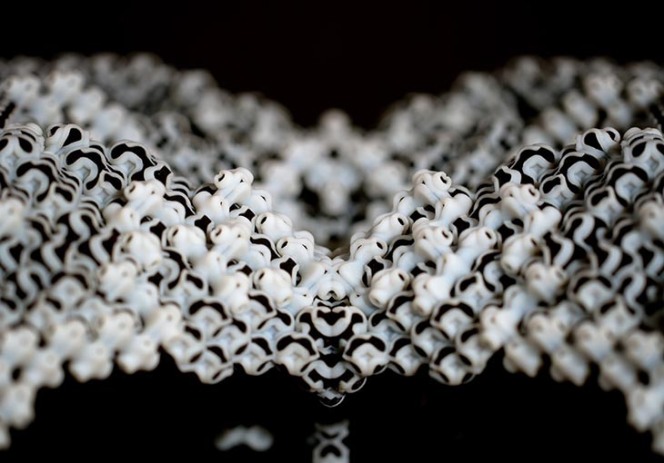
Apollo Spiliotis: At the ACADIA 2014 conference at USC I had the chance to interview Architect, Game Developer & tenure-track Professor at the USC School of Architecture Jose Sanchez . We talked about his views on the current state and future of Architectural Design. Be prepared to read about Gaming and Generative Collaborative Design Environments, and to examine Jose's 3D printed installation pieces at the conference.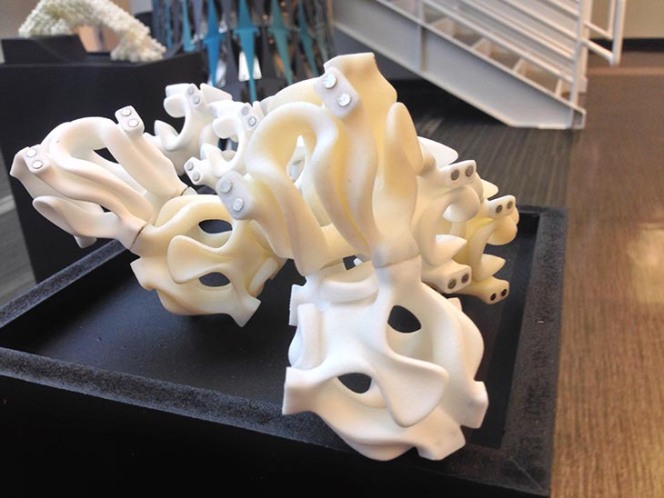
Apollo Spiliotis: What is your experience with 3D printing and how do you use your game development background in your designs?
Jose Sanchez: In this exhibition, I’m presenting a paper and also a new piece sponsored by Stratasys titled Polyomino. The piece is totally 3D printed , and the idea behind it is to connect the gaming world with the Maker movement. The project is called “From Gaming to Making”.  We created a video game that allowed people to combine units in different ways (similar and yet much more complex than the ones in Minecraft) and potentially directly export those for 3D printing. The movement started by Minecraft, and people like Will Wright with Sim City, were a big inspiration for me. If you think about it, gaming is the most massive interactive medium we have, and it really allows you to design anything.//player.vimeo.com/video/90921399
We created a video game that allowed people to combine units in different ways (similar and yet much more complex than the ones in Minecraft) and potentially directly export those for 3D printing. The movement started by Minecraft, and people like Will Wright with Sim City, were a big inspiration for me. If you think about it, gaming is the most massive interactive medium we have, and it really allows you to design anything.//player.vimeo.com/video/90921399
Polyomino from jomasan on Vimeo.
Apollo Spiliotis: Minecraft is very powerful, and basically free. Is it your intent to make your games available to users for free as well?
Jose Sanchez: My ambition is to make it a free platform; having a lot of people playing for free would increase the design possibilities exponentially. This isn't just virtual speculation; as an example on how to translate this design to the real space and use physical objects, you can turn these modules into magnetic unitsand combine them in different ways, just like with toys. One of my previous projects, a game I co-created with Alyssa Andrasek called Bloom, allows anybody to really create large structures out of smaller identical components.  Bloom structure in the main courtyard at USC , during Acadia Conference 2014.
Bloom structure in the main courtyard at USC , during Acadia Conference 2014.
Apollo Spiliotis: Do you find that game design & development can aid the Architectural Design process?
Jose Sanchez: I think that in Architecture there have been two major trends involving Gaming. Architects like Kas Oosterhuis or Winy Maas, from MVRDV, have started using video game platforms in their explorations. What we’re seeing today though, is a democratization of the indie game movement, so that anyone could really become a game developer.This allows people like us to really develop video games that are actually accessible and could actually operate very well with a much larger audience. 
Programmable Archietcture, by Kas Oosterhuis.
I definitely think that there are two possibilities within video game spaces: one is very narrative, in which you discover and explore the space in a video game; the other is procedural, in which you build the world yourself.This last one has so much more potential: it’s not a pre-packaged narrative or story that you present a player with, you’re really creating a “sandbox”. So this is why games like Sim City or Minecraft are more in line with the way I’m thinking, which we can call generative world building.
Apollo Spiliotis: What’s your preferred choice of software to develop your Games and create your 3D printable Designs?
Jose Sanchez: I have somehow a long history of software use. I started with a rendering company where we used 3Ds Max and other kind of rendering packages. When I decided to learn more development and scripting I turned to Processing and other open-source platforms. I recently switched to Unity as a game platform, and that has been great. Unity combines the power of Processing to write code with the possibility to explore something that is beyond the tools given by the software itself, and lets you bring in models from Maya, 3Ds Max, Blender, etc. In a way Unity integrates any kind of media into a game environment, as the name itself suggests; it also tries to unify all different types of media, like sound, scripts and geometry in 3D space. So it has really been a facilitator to a way of thinking that is not just one paradigm of design, but really integrating multiple paradigms to create something like a video game.
Apollo Spiliotis: I guess this design process can evolve when you assemble your assets into the game engine, where you can have some rules and even real-world physics, and the models either create or adapt to the environment. Do you find this leads you somewhere better and unexpected with your design, as you can see the interaction of your geometry in real-time in a sense?
Jose Sanchez: I think we rely very much on ideas of emergence, the idea that you provide a series of building blocks, a very finite tile set, like simple rules that a player can combine in different ways. So the search space of design is always described as such a large thing, but people figure out how to combine things in an interesting way and discover patterns within it. I think it’s an interesting model for us to design with, because we’re not anticipating all the problems but we’re giving tools for potential design solutions. We often get users that discover really interesting things, so we celebrate that.  Apollo Spiliotis: What’s your plan for releasing your different pieces of software?
Apollo Spiliotis: What’s your plan for releasing your different pieces of software?
Jose Sanchez: Quite a few video games on my website Plethora-Project , are the result of work we’re doing with students, and the research is always kind of open-source. All the video tutorials and the code has always been open-source, and we’re currently developing a video game, which I’m hoping to present at the next ACADIA, called BLOCK. BLOCK is trying to connect the real world with the video game; it’s also something you can download, but currently under development since it needs some time to be improved. We want to involve the users in the development with constant feedback from the beginning, so hopefully we’re going to get a community around it to perfect it.  Apollo Spiliotis: Do you think you could integrate game design with Augmented Reality?
Apollo Spiliotis: Do you think you could integrate game design with Augmented Reality?
Jose Sanchez: I definitely think that Augmented Reality is an emerging field and will have a huge impact on Architecture and Design in general. I see great potential in generative systems, the idea that you could manipulate things that simulate reality in terms of material properties, in terms of gravity and structure, etc. A little bit like playing with Lego blocks, but in a virtual world, with feedback of what is possible. There are already many games that have to do with structural analysis, like World of Goo, where you’re playing with structures and you improve through failure and success to create interesting designs. If you combine that experience with hundreds of thousands of players, interesting solutions can be shared within the community giving everyone the chance to learn, and interesting patterns can come out of that.
Apollo Spiliotis: instead of writing code, the gamification of design could allow users to collaborate on a generative design inside the game from anywhere in the world?
Jose Sanchez: Correct. I will give you an example of what happens when you are using BLOCK. If you have the data of how much energy let’s say a solar panel has, or how fast certain vegetables grow for urban farming, and you start trying to combine those two factors together, you’ll be able to do it, though it will take you some time. However, if you have a “Sandbox” that really has all that information available for you, you could start really tinkering putting these things together, to create an urban system that is ecological and sustainable, it really would allow players to communicate in the same space or just by sharing ideas and patterns.I feel that the creation of patterns should be in the hands of the community and should be evolving constantly, because the patterns of what we consider relevant today are always in flux, always changing based on what people discover. I really want to be part of that conversation, making tools for people to quickly engage and tinker with potential physical objects that they could get in the market.
Apollo Spiliotis: One final question, that I also posed to Alvin Huang, I’d love your opinion as well. People in this creative field, especially Architects involved mostly in complex levels of Design, tend to prefer being dressed in black, as coincidentally you are today. Why do you think that is? Tradition, is it a uniform in a sense, or do you want your work to stand out?
Jose Sanchez: That’s a good one, there are probably several practical reasons that I wouldn’t like to discuss openly. But I think in a way it might have something to do with what I always talk to my students about, maybe this might sound completely excessive in sense of control, but the way you prepare a board…you want to use very simple fonts and structure, I always get really angry when people use very crazy fonts that really don’t go with the project. I really prefer a very clean background, something that makes the work stand out. In that sense, I guess I really want to talk about the work, what we’re putting forward in terms of Design, so I don’t want distract the viewer. My BLOOM installation has a very eccentric shiny pink color, so there’s no issue about working with color. 
Jose Sanchez was also one of the organizers of the ACADIA 2014 Hackathon. Check out the video below to get a glimpse of the event, and find out more about it in “ArchiTrek The Next Generation – Top 10 reasons to attend the ACADIA conference”.//player.vimeo.com/video/110960668
ACADIA HACKATHON from jomasan on Vimeo.
Editor's Note: Apollo Spiliotis is a Project Architect at SubenDougherty in New York by day, and a technology writer, CG artist and 3D printing enthusiast by night. With an immense passion for technology and digital design, he loves sharing knowledge and developing his skills along the way. Having been published on industry websites and magazines, his fascination with 3D design led him to found archiCADmonkey.com, where he shares news, tutorials, tips & tricks, and interviews of luminaries from the design world. ch as distributed manufacturing.Connect with Apollo on Twitter and stay tuned for his next blog post on his ACADIA 2014's adventures.
Related articles
Also in NOVEDGE Blog
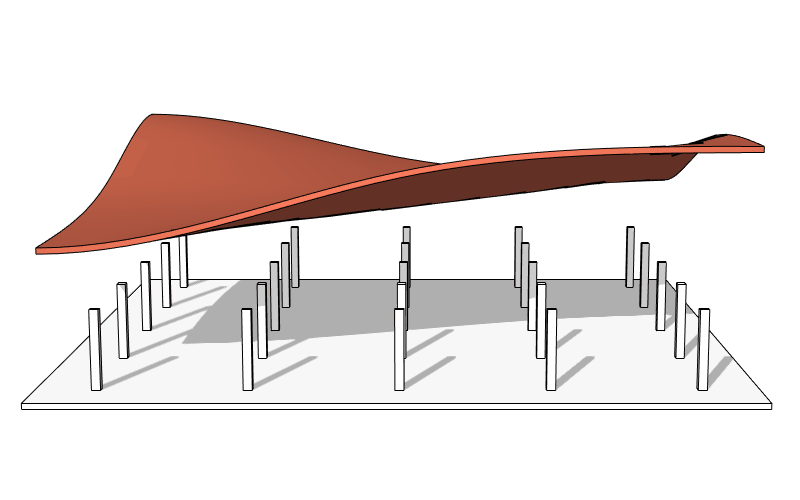
Enhance Your Designs with VisualARQ 3: Effortless Geometry Extensions for Walls and Columns
April 30, 2025 8 min read
Read More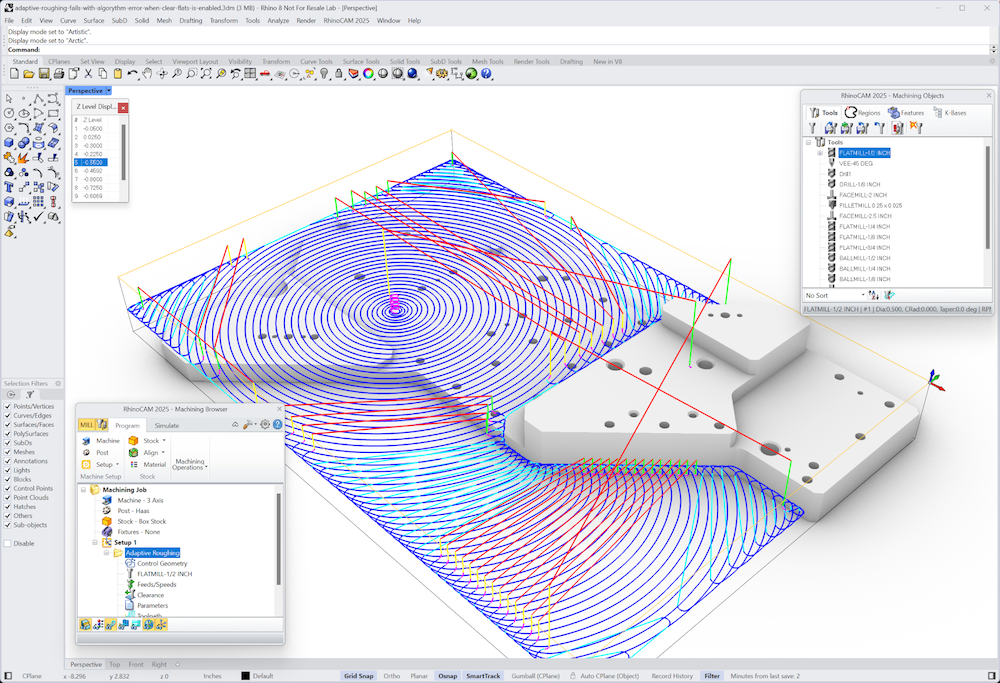
MecSoft Unveils RhinoCAM 2025 and VisualCAD/CAM 2025 with Enhanced Features
March 08, 2025 5 min read
Read MoreSubscribe
Sign up to get the latest on sales, new releases and more …



